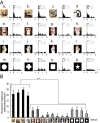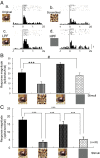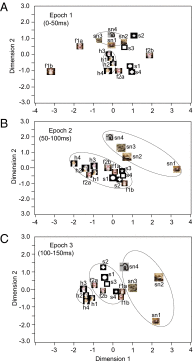Pulvinar neurons reveal neurobiological evidence of past selection for rapid detection of snakes
- PMID: 24167268
- PMCID: PMC3839741
- DOI: 10.1073/pnas.1312648110
Pulvinar neurons reveal neurobiological evidence of past selection for rapid detection of snakes
Abstract
Snakes and their relationships with humans and other primates have attracted broad attention from multiple fields of study, but not, surprisingly, from neuroscience, despite the involvement of the visual system and strong behavioral and physiological evidence that humans and other primates can detect snakes faster than innocuous objects. Here, we report the existence of neurons in the primate medial and dorsolateral pulvinar that respond selectively to visual images of snakes. Compared with three other categories of stimuli (monkey faces, monkey hands, and geometrical shapes), snakes elicited the strongest, fastest responses, and the responses were not reduced by low spatial filtering. These findings integrate neuroscience with evolutionary biology, anthropology, psychology, herpetology, and primatology by identifying a neurobiological basis for primates' heightened visual sensitivity to snakes, and adding a crucial component to the growing evolutionary perspective that snakes have long shaped our primate lineage.
Keywords: Snake Detection Theory; evolution; low-pass filtered images; visual responses.
Conflict of interest statement
The authors declare no conflict of interest.
Figures





References
-
- Isbell LA. The Fruit, the Tree, and the Serpent: Why We See so Well. Cambridge, MA: Harvard Univ Press; 2009.
-
- Henshilwood CS, et al. Emergence of modern human behavior: Middle Stone Age engravings from South Africa. Science. 2002;295(5558):1278–1280. - PubMed
-
- Isbell LA. Snakes as agents of evolutionary change in primate brains. J Hum Evol. 2006;51(1):1–35. - PubMed
Publication types
MeSH terms
LinkOut - more resources
Full Text Sources
Other Literature Sources
Miscellaneous

